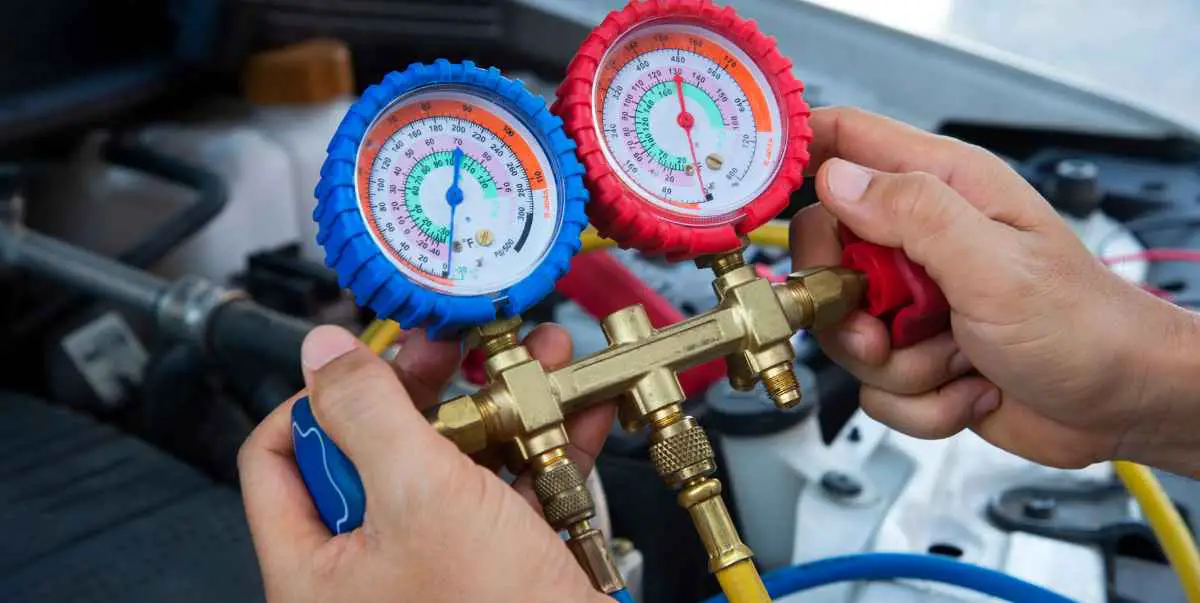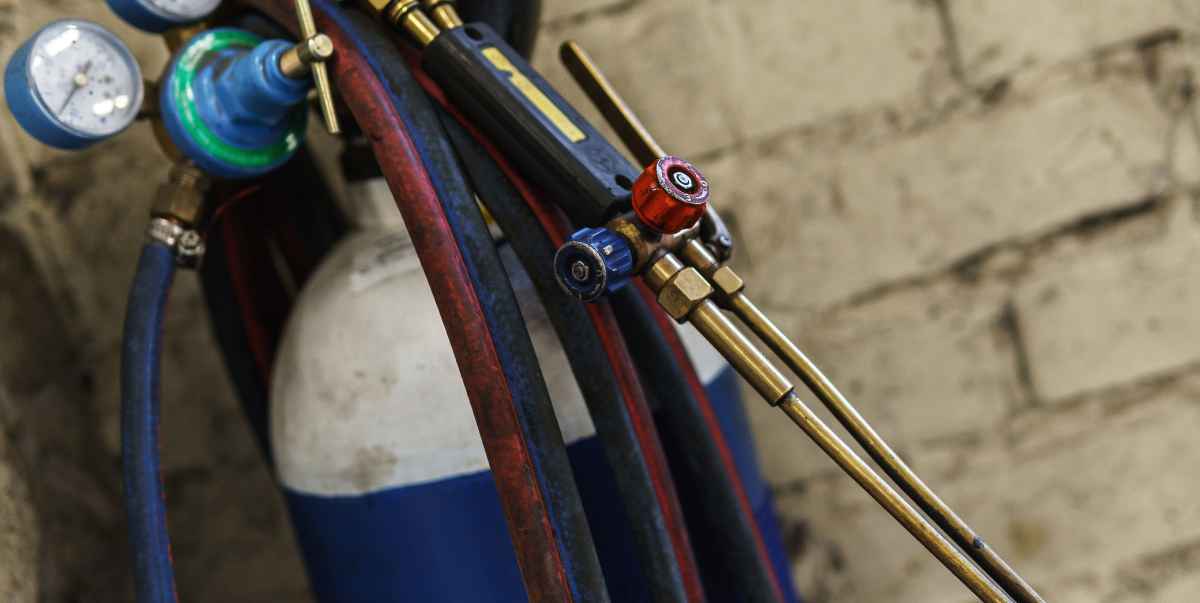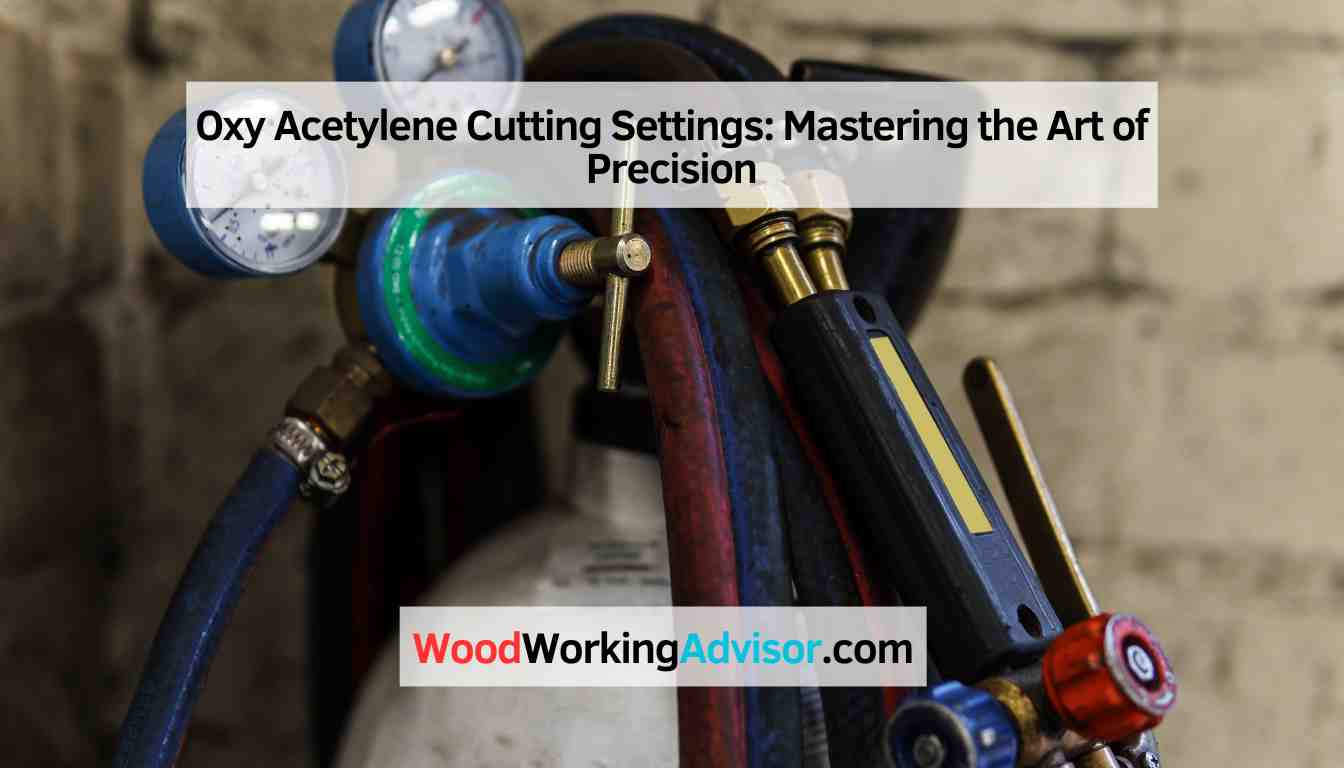For oxy acetylene cutting, set the oxygen pressure at 35-45 psi and acetylene at 5-15 psi. Oxy acetylene cutting settings are crucial for achieving clean and precise cuts in metal fabrication.
Proper adjustment of oxygen and acetylene pressures, as well as the cutting tip size, directly impact the efficiency and quality of the cutting process. By understanding and optimizing these settings, welders can ensure maximum productivity and accuracy in their cutting operations.
This guide will delve into the key factors to consider when setting up oxy acetylene cutting equipment, enabling you to enhance your skills and deliver superior results in your metalworking projects.
The Basics Of Oxy-acetylene Cutting
Oxy-acetylene cutting settings are crucial for achieving the desired results. Adjusting the gas flow, oxygen pressure, and cutting speed correctly is fundamental to ensuring clean and precise cuts. Understanding the optimal settings for different materials is essential for efficient oxy-acetylene cutting.
Introduction To Oxy-acetylene Cutting
Oxy-acetylene cutting is a commonly used method in metal fabrication.
By utilizing a combination of oxygen and acetylene gases, metal can be cut with precision and efficiency.
Understanding The Equipment
The equipment used in oxy-acetylene cutting includes a torch, hoses, regulators, and a cutting tip.
- Torch: The torch mixes oxygen and acetylene to create the cutting flame.
- Hoses: Transfer the gases from the tanks to the torch.
- Regulators: Control the pressure and flow of oxygen and acetylene.
- Cutting Tip: Determines the size of the cutting flame.

Mastering Precision Cuts
Setting Up The Work Area
Begin by cleaning the work area thoroughly to avoid any potential hazards. Secure the metal piece firmly in place using clamps to prevent movement during cutting.
Adjusting Cutting Speed And Angle
Use the manufacturer’s recommendations to set the cutting speed and adjust the torch angle for optimal results. Make sure to double-check the settings before starting the cutting process.
Troubleshooting And Best Practices
Oxy-acetylene cutting is a powerful and versatile technique, but even the most skilled operators can encounter issues from time to time. By understanding common cutting problems and taking the necessary safety measures, you can ensure your oxy-acetylene cutting process runs smoothly. Let’s delve into troubleshooting and best practices for oxy-acetylene cutting.
Dealing With Common Cutting Issues
When dealing with oxy-acetylene cutting, it is essential to be aware of the common cutting issues that may arise. Understanding these issues will enable you to troubleshoot effectively and maintain a high level of cutting quality.
Here are some common cutting issues:
- Inconsistent or uneven cuts
- Excessive slag formation
- Slow cutting speed
- Poor pierce quality
- Excessive kerf width
To combat these issues, it is important to carefully adjust cutting settings and maintain equipment properly. Inconsistent cuts may be caused by incorrect gas flow settings, while slow cutting speed may be due to insufficient oxygen pressure. By understanding the root causes of these issues, you can troubleshoot effectively and optimize your cutting process.
Safety Measures And Precautions
Operating oxy-acetylene cutting equipment requires strict adherence to safety measures and precautions to prevent accidents and ensure the well-being of the operator and those nearby.
Here are some safety measures and precautions to keep in mind:
- Always wear appropriate personal protective equipment (PPE), including flame-resistant clothing, gloves, and goggles.
- Keep the work area well-ventilated to prevent the accumulation of combustible gases.
- Regularly inspect and maintain cutting equipment to ensure it is in optimal working condition.
- Use flashback arrestors and check valves to prevent dangerous backflow of gases.
Adhering to these safety measures and precautions is crucial for the safe operation of oxy-acetylene cutting equipment.
Advanced Techniques And Applications
Discover advanced oxy-acetylene cutting techniques and settings to enhance precision and efficiency in metal fabrication applications. Learn how optimizing cutting parameters can result in cleaner cuts and improved overall performance. Mastering these advanced techniques can elevate your metalworking capabilities to the next level.
Oxy Acetylene cutting is commonly used in various industries and art forms due to its versatility and precision. Understanding the advanced techniques and applications of oxy acetylene cutting settings can unlock a world of possibilities for both artistic and industrial purposes. In this section, we will explore the different applications of oxy acetylene cutting and how it can be used to create artistic cutting designs and cater to the needs of industrial and metalworking sectors.
Artistic Cutting Designs
Oxy acetylene cutting offers artists the ability to create intricate and visually appealing designs. With precise control over the cutting torch and its settings, artists can forge their imagination into reality. Here are a few artistic cutting design techniques:
- Freeform Cutting: Artists can freely move the torch to create flowing and organic shapes, allowing for dynamic artwork.
- Stencil Cutting: Using stencils, artists can cut out intricate patterns, letters, or logos with accuracy and ease.
- Metal Sculpting: Oxy acetylene cutting can be utilized to sculpt metal, enabling artists to transform a plain sheet into a three-dimensional masterpiece.
- Inlay Cutting: By cutting precise grooves into one piece of metal and fitting another piece into it, artists can create stunning inlay designs.
Industrial And Metalworking Uses
Beyond artistry, oxy acetylene cutting finds extensive applications in various industrial and metalworking sectors. The ability to cut through thick metals with ease makes it a go-to method. Here are some prominent industrial uses:
| Industry | Application |
|---|---|
| Automotive | Cutting exhaust pipes, frame repairs, and custom modifications |
| Construction | Cutting and shaping steel beams, pipes, and other structural components |
| Shipbuilding | Trimming metal sheets, creating openings for pipes, and cutting heavy plates |
| Metal Fabrication | Manufacturing metal components, cutting and shaping various metal types |
These are just a few examples; oxy acetylene cutting also proves useful in mining, aerospace, and manufacturing industries. The precision and versatility it offers make it an indispensable tool for any industrial application.
Maintenance And Care
To ensure optimal performance, proper maintenance and care of oxy acetylene cutting settings are essential. Regular equipment checks and adjustments are crucial for safety and efficiency in metal fabrication processes. Maintaining correct settings can enhance cutting precision and prolong equipment lifespan.
Keeping your oxy acetylene cutting equipment in good working condition is crucial for efficient and safe operation. Regular cleaning and maintenance can help prolong the lifespan and performance of your tools. Additionally, proper storage practices can ensure that your equipment remains in top-notch condition when not in use. In this section, we will discuss the importance of cleaning and maintaining your equipment, as well as provide valuable tips for storing and maximizing longevity.
Cleaning and Maintaining Equipment
Regularly cleaning your oxy acetylene cutting equipment is essential to remove dust, debris, and other contaminants that can affect its performance. Here are a few simple steps to follow:
1. Inspect the equipment: Before cleaning, inspect all components for any signs of wear, damage, or loose connections. Tighten any loose fittings or replace damaged parts before proceeding.
2. Dust removal: Use a soft brush or cloth to remove any loose dust and debris from the equipment. Pay extra attention to the torch head, hoses, and regulators, as they are more prone to collecting dirt.
3. Cleaning agents: For stubborn stains or grease buildup, use a mild detergent mixed with warm water. Avoid using harsh chemicals or abrasive cleaners that can damage the equipment. Rinse thoroughly with clean water and dry with a soft cloth.
4. Check for leaks: After cleaning, it’s essential to check for any gas leaks. Apply a leak detection solution or a mixture of soap and water to all connections and observe for any bubble formation. If bubbles appear, tighten the connections or replace faulty parts.
Storage and Longevity Tips
Proper storage is just as important as regular maintenance to ensure the longevity and performance of your oxy acetylene cutting equipment. Consider the following tips:
1. Cool, dry environment: Store your equipment in a cool, dry place away from moisture and extreme temperatures. Exposure to humidity or heat can lead to corrosion or damage.
2. Secure storage: Keep your tools in a secure area to prevent unauthorized access or accidental damage. Consider using lockable cabinets or carrying cases for added protection.
3. Avoid direct sunlight: Prolonged exposure to sunlight can cause fading or degradation of certain materials. Store your equipment in a shaded area or use protective covers when not in use.
4. Properly coil and hang hoses: Coiling hoses neatly and hanging them on hooks or racks can prevent kinks and tangles, which can compromise the flow of gas during operation.
In conclusion, dedicating time and effort to maintain and care for your oxy acetylene cutting equipment can greatly improve its longevity and performance. Regular cleaning, proper storage, and adherence to maintenance guidelines will ensure that your tools are in optimal condition whenever you need them. Follow these tips for reliable and efficient oxy acetylene cutting operations.

Frequently Asked Questions For Oxy Acetylene Cutting Settings
What Are The Ideal Cutting Settings For Oxy Acetylene?
The ideal cutting settings for oxy acetylene depend on factors like material type, thickness, and torch tip size. Generally, the oxygen pressure should be set between 40-50 psi, while the acetylene pressure should be set around 5 psi. The cutting tip size should correspond to the thickness of the material being cut.
How Do I Set The Oxygen Pressure For Oxy Acetylene Cutting?
To set the oxygen pressure for oxy acetylene cutting, ensure the torch valve is closed and slowly open the oxygen cylinder valve. Adjust the pressure regulator until it reaches the desired pressure range (40-50 psi). Always refer to the manufacturer’s guidelines for specific instructions.
What Acetylene Pressure Should Be Used For Oxy Acetylene Cutting?
For oxy acetylene cutting, the acetylene pressure should typically be set around 5 psi. It’s important to note that higher pressures can lead to excessive heating and potential damage to the torch and materials being cut. Always follow the manufacturer’s recommendations for the specific torch and application.
Conclusion
Understanding the proper oxy acetylene cutting settings is crucial for achieving precise and efficient cutting results. By carefully adjusting the gas pressures, flame characteristics, and cutting speed, operators can optimize their cutting process and ensure quality outcomes. With the right settings, users can minimize waste and improve overall productivity, making oxy acetylene cutting a valuable technique in metal fabrication and construction industries.


